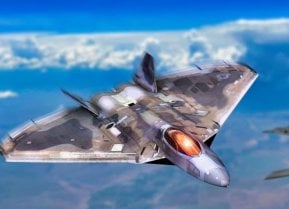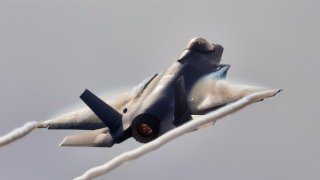The U.S. Navy Has an F-35 Problem It Won't Ever Solve
The F-35 has some important limitations regarding the range that U.S. Navy aircraft carriers will struggle with in a war with China or any other great power rival.
Summary: While aircraft carriers are a formidable power projection tool, their effectiveness is challenged by Anti-Access/Area Denial (A2/AD) strategies from near-peer adversaries. The F-35C and F-35B variants, designed for carrier and vertical/short takeoff and landing operations, face operational range and combat radius limitations, potentially reducing their battlefield impact in A2/AD environments. Despite these challenges, the F-35's capabilities against previous generations of fighters must also be considered.
The F-35 Lightning II: Evaluating the Backbone of US Naval Power Projection
In many respects, aircraft carriers are the main weapon of the U.S. Navy and, by extension, of the U.S. military.
Aircraft carriers can project power like no other conventional weapons system. They do that through their fighter jets, which can take out warships, bomb ground targets, and establish air superiority over the battlefield.
However, near-peer U.S. adversaries have been developing Anti-Access/Aerial Denial (A2/AD) systems to restrict U.S. aircraft carriers. If a flattop cannot get close enough to the action, its impact is severely blunted.
One response to A2/AD measures would be to fly aircraft with superior range. Yet for the F-35 Lighting II, the newest fighter jet to operate from American aircraft carriers, range might be an issue.
F-35: Let’s Talk About Fuel
The Navy uses the C version of the F-35 Lightning II stealth fighter jet, while the Marine Corps operates both the F-35C and the F-35B. (Marine aviators operate from Navy aircraft carriers and amphibious assault ships and fly alongside their Navy brethren.)
The F-35C is designed for carrier operations, while the F-35B is a Short Take-off and Vertical Landing (STOVL) aircraft that can take off and land like a helicopter.
According to Lockheed Martin and the Navy, the F-35C Lightning II can carry about 20,000 lbs of fuel in its internal fuel tanks, which translates into an operational range of approximately 1,200 nautical miles (1,380 miles). The fighter jet can carry additional fuel in external fuel tanks, but this limits the stealth capabilities of the aircraft and largely defeats its purpose on the battlefield.
The aircraft’s combat radius – the range a fighter jet can operate in combat conditions and with a full loadout – is much smaller. The F-35C has a combat radius of about 600 nautical miles.
The F-35B is even more limited. It can carry slightly over 13,000 lbs of fuel in its internal fuel tanks, which translates to an operational range of about 900 nautical miles and a combat radius of 450 nautical miles.
All versions of the F-35 can support mid-air refueling to extend their range. However, the air tanks that would do the refueling are not stealth aircraft, and refueling operations would undermine the low-observable capabilities of the F-35. Mid-air refueling in a permissive or non-permissive battle environment would range from risky to downright foolish.
But to judge the operational range of these two versions of the F-35, we have to look at the capabilities of the fighter jets that have gone before them, namely, the F/A-18 Hornet, F/A-18 Super Hornet, AV-8B Harrier, and F-14 Tomcat.
The F/A-18 Hornet has a combat radius of approximately 1,100 nautical miles, while the F/A-18 Super Hornet can go about 1,300 nautical miles. The AV-8B Harrier has a combat radius of 300 nautical miles, and the retired, legendary F-14 Tomcat could go approximately 285 nautical miles, which could be stretched to 650 nautical miles with external fuel tanks.
So the F-35C has a better combat radius than the F-14 Tomcat, but half that of the F/A-18 Hornet and F/A-18 Super Hornet.
In the STOVL category, the F-35B does better than its comparable aircraft, the AV-8B Harrier, but vastly underperforms the combat radii of to the F/A-18 Hornet and F/A-18 Super Hornet.
About the Author
Stavros Atlamazoglou is a seasoned defense journalist specializing in special operations and a Hellenic Army veteran (national service with the 575th Marine Battalion and Army HQ). He holds a BA from Johns Hopkins University and an MA from the Johns Hopkins School of Advanced International Studies (SAIS). His work has been featured in Business Insider, Sandboxx, and SOFREP. Email the author: [email protected].


